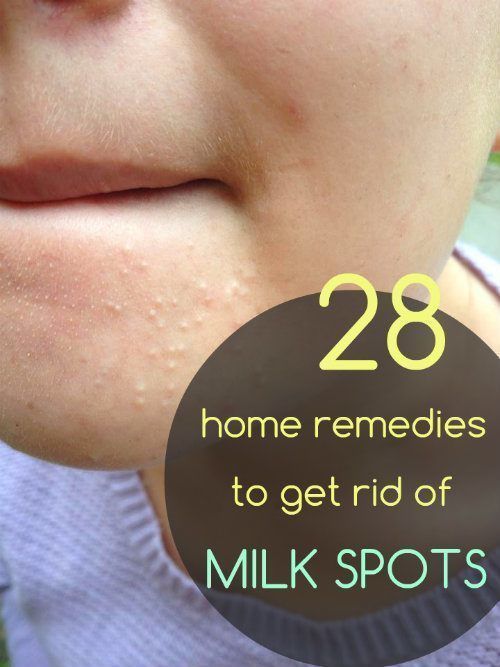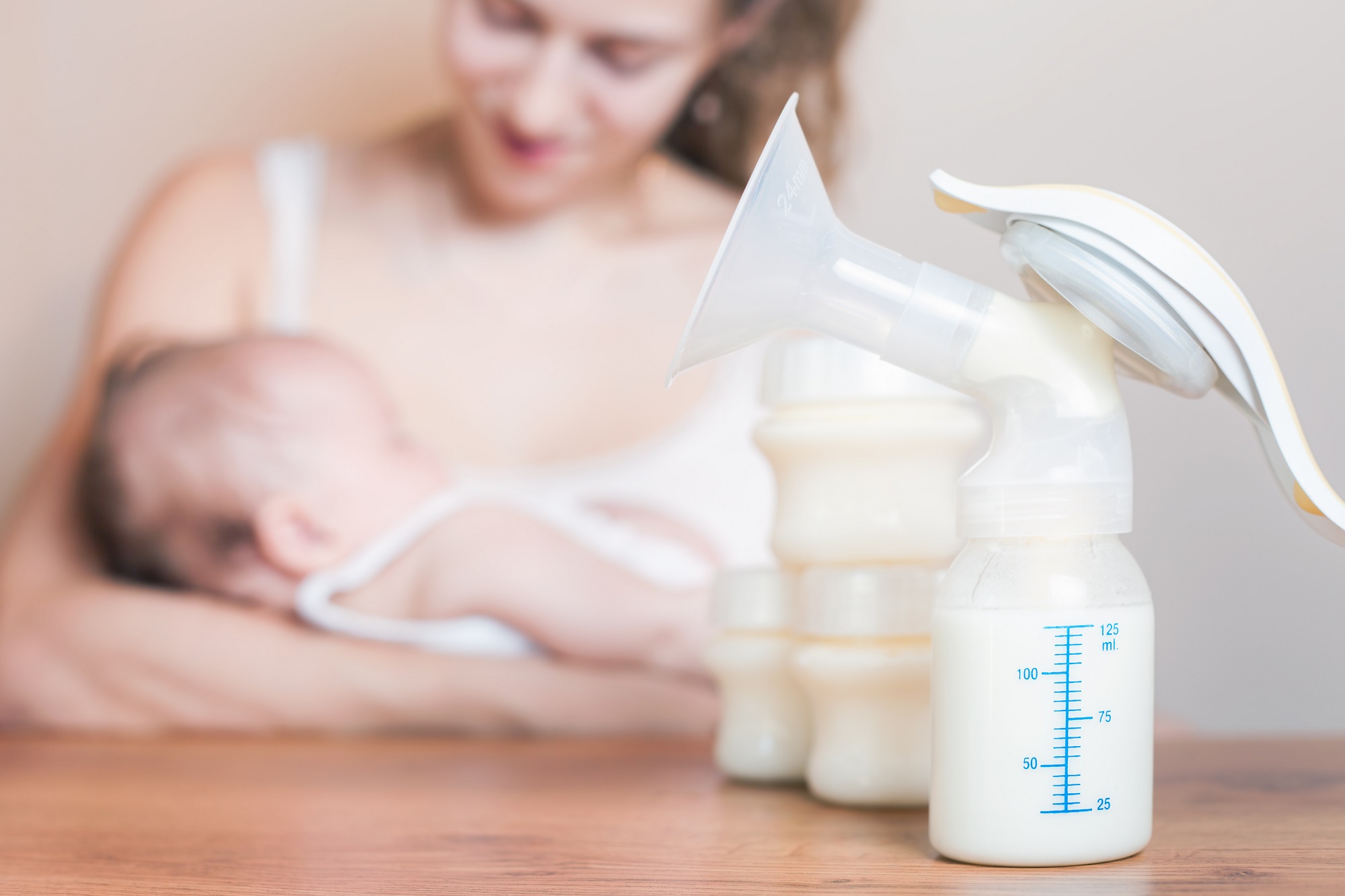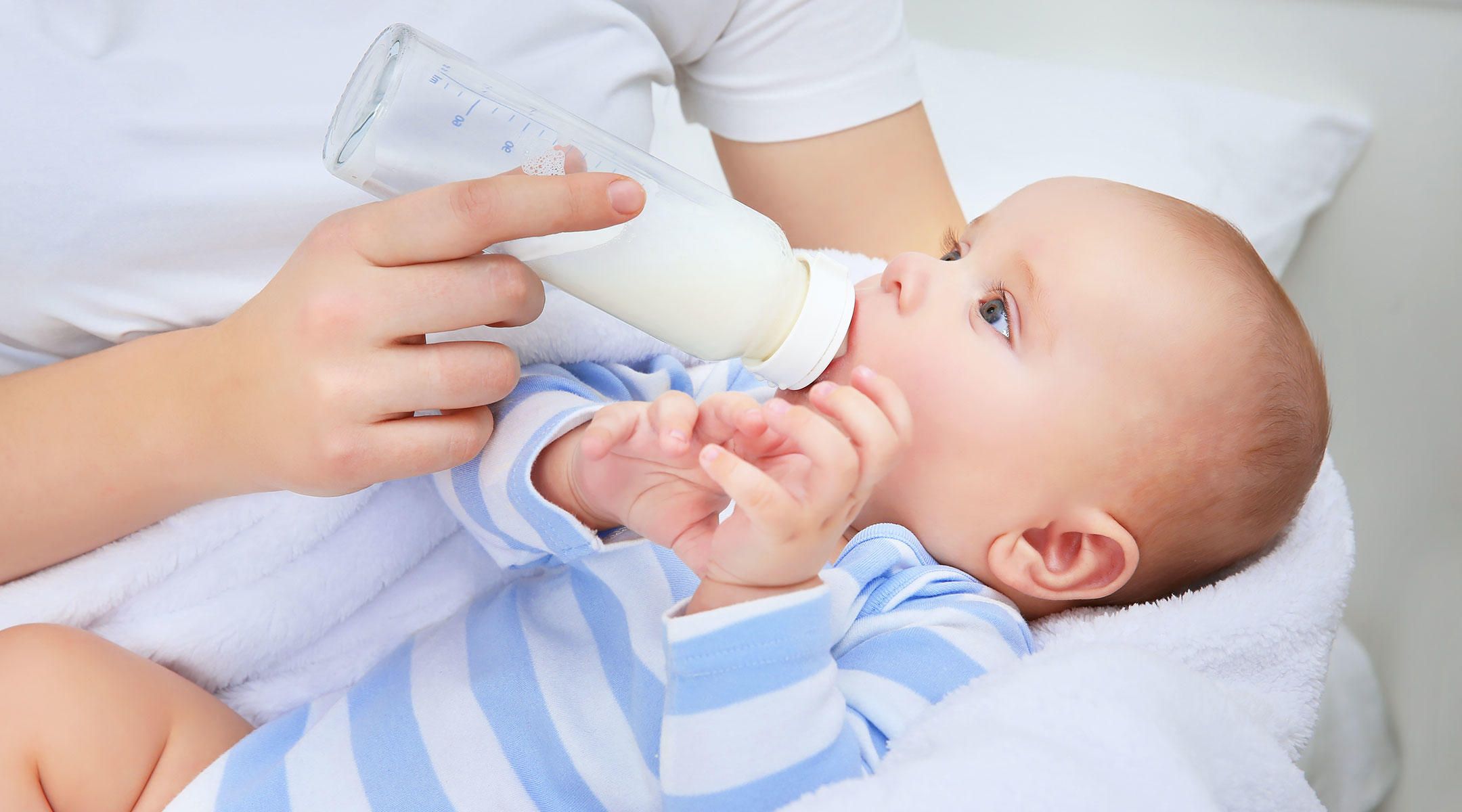
As a new parent, it’s only natural to worry about every little thing when it comes to your baby’s health. One common concern is the appearance of tiny white spots on your newborn’s face, often referred to as “milk spots”. But what are these spots and should you be worried about them?
Milia, also known as “baby milk spots”, are small, harmless, and common blemishes that can appear on a baby’s skin. These tiny white spots are often found on a baby’s face, particularly on the nose, cheeks, and chin. While they may look like acne or even tiny pimples, they are actually caused by trapped dead skin cells.
The exact cause of milia is not fully understood, but it is believed to be related to the development of a baby’s skin while in the womb. Before birth, a baby is covered in a substance called vernix, which protects their delicate skin from the amniotic fluid. After birth, the vernix disappears, and the dead skin cells that were supposed to shed naturally can get trapped, leading to the formation of milia.
So, should you be concerned about milia on your newborn’s face? The good news is that milia is harmless and usually goes away on its own within a few weeks. In some cases, milia can last for several months, but this is less common. It is important to note that milia is different from other skin conditions like baby acne, which can cause red and inflamed bumps on the baby’s face.
If you’re worried about the appearance of milia on your baby’s face, it is always best to consult with a healthcare professional or your GP for an examination. They can help identify if it is indeed milia or another skin condition, such as infantile acne or seborrheic dermatitis.
Fortunately, there are no specific treatments needed for milia in newborns. It is generally recommended to avoid picking or trying to remove the milia, as this can cause more harm than good. Instead, focus on keeping your baby’s face clean by gently washing it with water and using a mild baby cleanser if necessary.
Remember, milia is a normal and harmless condition that doesn’t require any medical intervention. It’s always a good idea to stay informed about your baby’s health, but rest assured that milia is nothing to worry about. In most cases, these tiny milk spots will fade away on their own, leaving your baby’s skin soft and smooth.
Contents
What causes milia in newborns?
Milia, commonly known as “milk spots,” are small white or yellow bumps that can appear on a newborn’s face. They are quite common and are not a cause for concern. Milia occur when tiny pockets of keratin, a protein found in our skin, become trapped under the surface of the skin. The keratin forms a small cyst, resulting in the formation of milia.
There are two main types of milia that can affect newborns:
Neonatal Milia:
- Neonatal milia are the most common type of milia found in newborns. They typically appear on the nose, cheeks, chin, and sometimes on the forehead. These milia are small and white in color.
- Neonatal milia are caused by immature sweat glands in the newborn’s skin. These sweat glands become clogged with skin cells, leading to the formation of milia.
Milia Toxicum:
- Milia toxicum, also known as “baby acne,” is another type of milia that can occur in newborns. Unlike neonatal milia, milia toxicum can appear on the baby’s chest, arms, and legs in addition to the face.
- Milia toxicum presents as small red bumps surrounded by areas of mild redness. These bumps are not dangerous and do not cause discomfort to the baby.
- Milia toxicum is thought to be caused by an inflammatory response to the skin adjusting to the outside world after being in the protective environment of the womb.
Milia in newborns are a normal occurrence and do not require any specific skincare or treatment. They usually disappear on their own within a few weeks or months. It is important to note that milia are not contagious and should not be a cause for concern for the mother or the baby’s caregivers.
Common symptoms of milia in babies

Milia are small, white or yellowish bumps that commonly appear on a newborn’s face, particularly on the nose, cheeks, and chin. These tiny bumps can also be found on the scalp, ears, and even on the upper trunk and limbs. They are usually about 1-2 millimeters in size and have a smooth, round shape.
The main characteristic of milia is their appearance as small cysts or papules. They are often mistaken for baby acne, but there are key differences between the two. Milia are caused by dead skin cells getting trapped in the skin’s surface, whereas baby acne is usually caused by an imbalance of hormones passed on from the mother during childbirth. Milia are also commonly mistaken for whiteheads, but they are not caused by clogged pores or oil production. Instead, milia occur when the skin’s natural exfoliation process is disrupted, resulting in the formation of tiny cysts.
Baby milia are typically harmless and do not cause any discomfort to the baby. They are not contagious and will usually disappear on their own within a few weeks or months. However, if you’re worried about your baby’s milia or if they last for a long time without any signs of improvement, it’s always a good idea to consult your pediatrician for a proper diagnosis and examination.
It’s important to note that milia are not a sign of poor hygiene or an allergic reaction to certain foods or products. They are simply a common skin condition that occurs in newborns and are considered to be a normal variation of skin development. Milia can affect any baby, regardless of their birthmarks or skin type.
Key Takeaways:
- Milia are small, white or yellowish bumps that commonly appear on a newborn’s face.
- They are caused by dead skin cells getting trapped in the skin’s surface.
- Milia are not baby acne or whiteheads, but a result of disrupted skin exfoliation.
- Baby milia are harmless, not contagious, and typically disappear on their own.
- If concerned, consult a pediatrician for a proper diagnosis.
| Milia | Baby Acne |
| Milia are small cysts or papules filled with dead skin cells. | Baby acne is caused by an imbalance of hormones passed on from the mother during childbirth. |
| Milia are commonly found on the nose, cheeks, chin, scalp, ears, and upper trunk and limbs. | Baby acne commonly appears on the face and can sometimes spread to the neck and back. |
| Milia are not caused by clogged pores or oil production. | Baby acne is caused by clogged hair follicles and oil production. |
| Milia are not a sign of poor hygiene or an allergic reaction. | Baby acne can be aggravated by certain foods or products. |
How to Identify Milia from Other Skin Conditions in Infants

When you’re a new parent, it’s natural to worry about every little blemish or bump on your baby’s delicate skin. One common skin condition that parents often come across is milia, which are small white bumps that can appear on a newborn’s face.
But how do you know if those little white bumps are actually milia? And how do they differ from other skin conditions that babies may experience?
What are milia?
Milia are tiny cysts filled with a protein called keratin. They are most commonly found on the nose, cheeks, and chin, but can also appear on other parts of the body. They are usually painless and don’t cause any discomfort to your baby.
Milia are different from baby acne, which is another common skin condition in newborns. While milia are small white bumps, baby acne consists of red or pink bumps that may have a white center. Baby acne can also appear on the chest and back, whereas milia are typically found on the face.
How to identify milia
Milia are easily identifiable by their small size and white color. They look like tiny whiteheads, and can sometimes even resemble small pearls or grains of sand. Unlike whiteheads, however, milia are not caused by clogged pores and cannot be squeezed or popped. Trying to do so may actually cause more harm than good.
If you’re unsure whether the bumps on your baby’s skin are milia or something else, it’s always best to consult a healthcare professional. They will be able to give you the right advice and help put your mind at ease.
Are milia contagious?
Milia are not contagious and cannot be spread from one person to another. They are a common and harmless skin condition that many newborns experience within the first few weeks of birth.
While milia may be a cause for concern for many parents, it’s important to remember that they are not harmful and will usually fade away on their own within a few weeks or months.
Preventing and treating milia
There is no surefire way to prevent milia, as they are a natural and common occurrence in newborns. In most cases, you should simply leave them alone and they will eventually go away on their own.
If you’re worried about the appearance of milia, you can try gently washing your baby’s face with warm water and mild baby soap. Avoid using any harsh or scaly products, as these can irritate your baby’s delicate skin.
It’s important to note that milia are not a sign of poor hygiene or lack of care. They are simply a result of your baby’s still-developing skin and are nothing to be worried about.
So, if you see those little white bumps on your baby’s face, don’t panic. They’re most likely just milia, and with a little time, they will fade away and your baby’s skin will become clear and smooth.
Key Takeaways:
- Milia are small white bumps filled with keratin and are common in newborns.
- Milia are different from baby acne, which consists of red or pink bumps.
- Milia can be identified by their small size and white color.
- Milia are not contagious and will usually fade away on their own.
- There is no surefire way to prevent or treat milia, but gentle cleansing can help.
If you’re still concerned about your baby’s skin condition, it’s always best to consult a healthcare professional to get the right advice.
Effective home remedies for treating milia in babies
If you have noticed small, white bumps on your baby’s skin, don’t panic! These little spots, known as milia, are common in newborns and typically do not cause any harm. However, if you want to help improve their appearance or assist in their natural fading process, there are some home remedies you can try.
1. Gentle cleansing: Cleanse your baby’s face with a mild, fragrance-free baby cleanser or simply use warm water. Use a soft cloth or your fingertips to gently wash the affected areas. Avoid scrubbing or using harsh soaps that can irritate the delicate skin.
2. Oatmeal bath: Adding some oatmeal to your baby’s bathwater can help soothe the skin and reduce the appearance of milia. Grind plain oats into a fine powder and sprinkle it in the bathwater. Let your baby soak in the mixture for a few minutes before gently rinsing off.
3. Breast milk: Breast milk is not only nutritious for babies but also has antibacterial properties. Applying a few drops of breast milk on the milia spots can help speed up the healing process. Simply express a little breast milk onto a cotton pad and dab it on the affected areas.
4. Avoid excessive heat: Overheating can worsen the appearance of milia. Keep your baby cool and comfortable by avoiding overdressing or exposing them to direct sunlight. Maintain a comfortable room temperature and dress your baby in lightweight, breathable fabrics.
5. Patience: In most cases, milia will resolve on their own without any treatment. It may take several weeks or even months for the bumps to fade completely. Remember, milia are typically a normal part of a baby’s skin development and do not require medical intervention.
If you notice any changes in the milia spots or if they last for an extended period, it’s best to consult your baby’s pediatrician or healthcare provider for further examination and advice.
| Takeaways: |
| – Milia are common in newborns and usually harmless. |
| – Gentle cleansing, oatmeal baths, and breast milk can help improve their appearance. |
| – Avoid excessive heat and be patient as milia typically fade on their own. |
| – Consult a healthcare provider if there are any concerning changes or if the milia persist for a long time. |
When to seek medical advice for milia in newborns
In most cases, milia in newborns are harmless and will resolve on their own within a few weeks or months. However, there are some situations where it may be necessary to seek medical advice for your baby’s milia.
If you’re unsure about whether or not to seek medical attention for your baby’s milia, here are a few signs that may indicate it’s time to consult a healthcare professional:
| Appearance of the milia | If the milia spots look different from the typical small, white bumps and instead appear red, swollen, or infected, it’s best to have them checked by a doctor. |
| Duration of the milia | If the milia spots persist for longer than a few months or if they’re continuing to multiply and spread, it may be a good idea to seek medical advice. |
| Associated symptoms | If your baby is experiencing any other symptoms along with the milia, such as fever, rash, or irritability, it’s important to consult a healthcare professional. |
| Baby’s discomfort | If your baby seems to be in pain or discomfort due to the milia spots, it’s advisable to get them checked out. |
Remember, if you’re unsure or concerned about your baby’s milia, it’s always better to err on the side of caution and seek medical advice. Your healthcare provider will be able to examine your baby’s milia and provide you with the necessary guidance and reassurance.
Tips for preventing milia in babies

Milia, also known as baby milk spots, are small white or yellowish bumps that can appear on a baby’s face, nose, and other areas. While milia are generally harmless and common in newborns, here are some tips to help prevent them:
- Keep your baby’s skin clean and dry: Gently clean your baby’s face with a mild soap and water, and make sure to pat dry the skin afterwards.
- Avoid using harsh skincare products: Stick to gentle, baby-friendly skincare products that are free of harsh chemicals and fragrances.
- Avoid excessive sun exposure: Protect your baby’s delicate skin from the sun by keeping them in the shade and using sun hats and clothing.
- Avoid using oily or greasy creams: These can clog the pores and contribute to the development of milia.
- Be cautious with baby acne treatments: Avoid using acne treatments or creams on your baby’s skin without consulting a healthcare professional.
- Avoid excessive rubbing or scrubbing of the baby’s skin: Be gentle when cleaning your baby’s face and avoid scrubbing too hard, as this can irritate the skin.
- Be patient and gentle while removing vernix: Vernix, the white waxy substance that protects the baby’s skin in the womb, may need to be gently wiped away, but avoid harsh rubbing.
- Avoid picking or squeezing the milia: It may be tempting to try to remove the milia, but this can cause skin damage and potential infection.
- Consult a medical professional: If you are concerned about your baby’s milia or if they last longer than a few weeks, it is always best to seek advice from a pediatrician or dermatologist.
Remember, milia are generally harmless and will often disappear on their own without any treatment. However, if you have any concerns or if the milia persist, it’s always best to seek professional advice to ensure your baby’s health and well-being.
